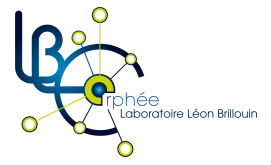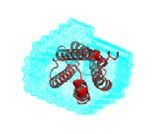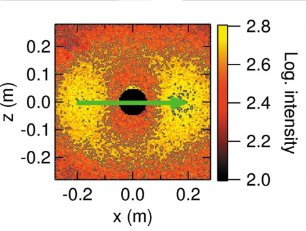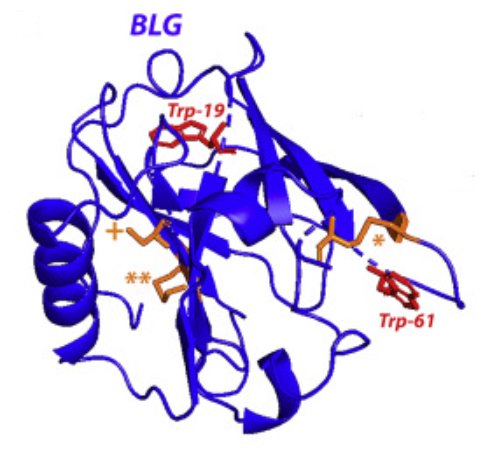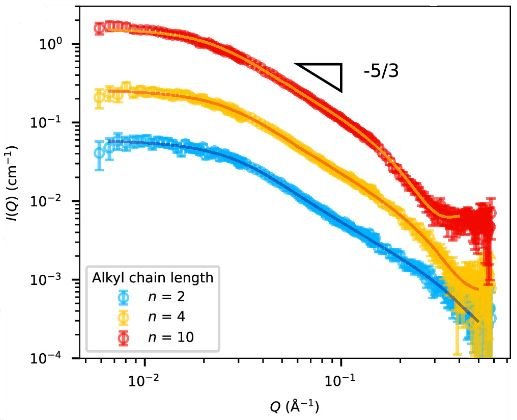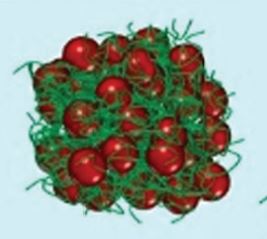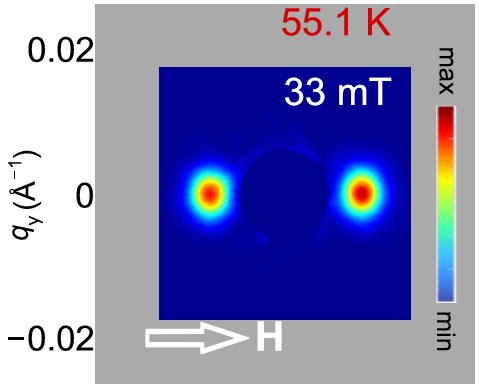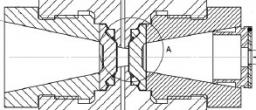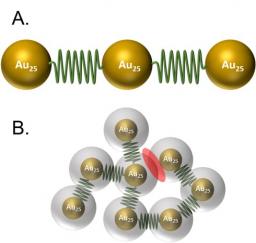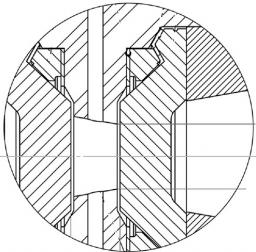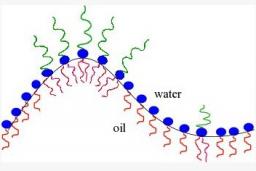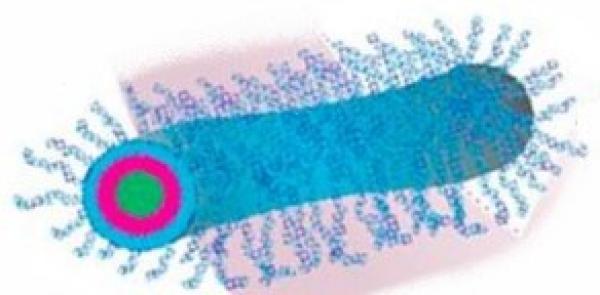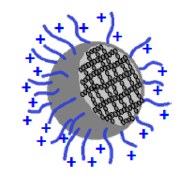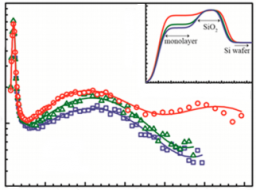Laboratoire Léon Brillouin
UMR12 CEA-CNRS, Bât. 563 CEA Saclay
91191 Gif sur Yvette Cedex, France
+33-169085241 llb-sec@cea.fr
Jul 06, 2023
Simeon Minic, Burkhard Annighöfer, Milos Milcic, François Maignen, Annie Brûlet, Sophie Combet
Apomyoglobin (apoMb), a model protein in biochemistry, exhibits a strong propensity to bind various ligands, which makes it a good candidate as a carrier of bioactive hydrophobic drugs. The stability of its hydrophobic pocket determines its potential as a carrier of bioactive compounds.
Jan 27, 2023
Sophie Combet, Françoise Bonneté, Stéphanie Finet, Alexandre Pozza, Christelle Saade, Anne Martel, Alexandros Koutsioubas, Jean-Jacques Lacapère, Biochimie (2022) in press.
The translocator protein (TSPO) is a ubiquitous transmembrane protein of great pharmacological interest thanks to its high affinity to many drug ligands.
Oct 17, 2022
I. Mirebeau et N. Martin, J. Appl. Cryst. (2022). 55, 1173-1183
The application is discussed of neutron methods to the study of reentrant spin glasses (RSGs), close to the transition towards a `canonical' spin glass (SG). The focus is on two emblematic systems, namely Au1−xFex and amorphous a-Fe1−xMnx. A set of experimental results is presented to highlight their peculiar static and dynamic properties.
Sep 02, 2022
Simeon Minić, Burkhard Annighöfer, Arnaud Hélary, Laïla Sago, David Cornu, Annie Brûlet, Sophie Combet
High pressure (HP) is a particularly powerful tool to study protein folding/unfolding, revealing subtle structural rearrangements. Bovine β-lactoglobulin (BLG), a protein of interest in food science, exhibits a strong propensity to bind various bioactive molecules.
Jul 01, 2022
Tiago Outerelo Corvo, Antoine Jourdain, Shona O’Brien, Frédéric Restagno, Eric Drockenmuller, and Alexis Chennevière
Poly(ionic liquid)s (PILs), similar to their ionic liquid (IL) analogues, present a nanostructure arising from local interactions.
Apr 21, 2022
Sumit Mehan, Laure Herrmann, Jean-Paul Chapel, Jacques Jestin, Jean-Francois Berret and Fabrice Cousin
We investigate the formation/re-dissociation mechanisms of hybrid complexes made from negatively charged PAA2k coated g-Fe2O3 nanoparticles (NP) and positively charged polycations (PDADMAC) in aqueous solution in the regime of very high ionic strength (I).
Nov 25, 2019
A. S. Sukhanov, Praveen Vir, A. S. Cameron, H. C. Wu, N. Martin, S. Mühlbauer, A. Heinemann, H. D. Yang, C. Felser, and D. S. Inosov
The cubic chiral helimagnets with the P213 space group represent a group of compounds in which the stable skyrmion-lattice state is experimentally observed. The key parameter that controls the energy landscape of such systems and determines the emergence of a topologically nontrivial magnetic structure is the Dzyaloshinskii-Moriya interaction (DMI).
May 04, 2019
B. Annighöfer , A. Hélary, A. Brulet, A. Colas de la Noue, C. Loupiac and S. Combet
Review of Scientific Instruments 90 (2019) 025106
Abstract :
We report on a high pressure (HP) cell designed for the determination of the structure of molecular solutions by small-angle neutron scattering (SANS). The HP cell is fitted up with two thick metallic windows that make the device very resistant under hydrostatic pressures up to 600 MPa (or 6 kbar).
Mar 05, 2019
Annelies Sels, Giovanni Salassa, Fabrice Cousin, Lay-Theng Lee, Thomas Bürgi,
Nanoscale 26 (2018) 12754.
Aromatic dithiol linkers were used to prepare aggregates of Au25(SR)18 clusters (SR: thiolate) via ligand exchange reactions. Fractions of different aggregate sizes were separated by size exclusion chromatography (SEC).
Mar 04, 2019
Marguerite Léang, Didier Lairez, Fabrice Cousin, Frédérique Giorgiutti-Dauphiné, Ludovic Pauchard, Lay-Theng Lee
During evaporative drying of a colloidal dispersion, the structural behavior at the air-dispersion interface is of particular relevance to the understanding of the consolidation mechanism and the final structural and mechanical properties of the porous media.
Feb 15, 2019
Burkhard Annighöfer, Arnaud Hélary, Annie Brûlet, Alexandre Colas de la Noue, Camille Loupiac, and Sophie Combet
We report on a high pressure (HP) cell designed for the determination of the structure of molecular solutions by small-angle neutron scattering (SANS). The HP cell is fitted up with two thick metallic windows that make the device very resistant under hydrostatic pressures up to 600 MPa (or 6 kbar).
Dec 12, 2018
Souha Ben Mahmoud, Wafa Essafi, Annie Brûlet and François Boué
The chain conformation in sulfonated polystyrene PSSNa of a degree of sulfonation 0.34 ≤ f ≤ 1, i.e., of various hydrophobicity, is followed in mixtures of water and increasing content of tetrahydrofuran (THF), a good solvent of the hydrophobic polystyrene moieties (which improves the solvent quality of the mixture).
Nov 20, 2018
Jyotsana Lal
This article is dedicated to the memory of Loic Auvray
The results on Winsor phases, droplet and bicontinous microemulsions phases with polymer-grafted lipids studied by Small Angle Neutron Scattering (SANS) are reported below, together with the contrast variation techniques used to characterize the average curvature in the system.
Sep 24, 2018
Fengjiao Qian, Lars J. Bannenberg, Heribert Wilhelm, Grégory Chaboussant, Lisa M. Debeer-Schmitt, Marcus P. Schmidt, Aisha Aqeel, Thomas T. M. Palstra, Ekkes Brück, Anton J. E. Lefering, Catherine Pappas, Maxim Mostovoy, Andrey O.
Aug 29, 2018
I. Mirebeau, N. Martin, M. Deutsch, L. J. Bannenberg, C. Pappas, G. Chaboussant, R. Cubitt, C. Decorse, and A. O. Leonov
Reentrant spin glasses are frustrated disordered ferromagnets developing vortexlike textures under an applied magnetic field. Our study of a Ni0.81Mn0.19Ni0.81Mn0.19 single crystal by small angle neutron scattering clarifies their internal structure and shows that these textures are randomly distributed.
Apr 17, 2018
Structural characterization of nanoparticles formed by fluorinated poly(2-oxazoline)-based polyphiles,
Anna Riabtseva, Leonid I. Kaberov, Laurence Noirez, Vasyl Ryukhtin, Corinne Nardin, Bart Verbraeken, Richard Hoogenboom, Petr Stepanek, Sergey K. Filippov, European Polymer Journal 99 (2018) 518.
Mar 24, 2018
Cationic thermoresponsive poly(n-vinylcaprolactam) microgels synthesized by emulsion polymerization using a reactive cationic macro-raft agent
L. Etchenausia, E. Deniau, A. Brûlet, J. Forcada and M. Save, Macromolecules (2018) sous presse.
Jul 31, 2017
Three-legged 2,2′-bipyridine monomer at the air/water interface: monolayer structure and reactions with Ni(II) ions from the subphase,
Wenyang Dai, Lay-Theng Lee, Andri Schütz, Benjamin Zelenay, Zhikun Zheng, Andreas Borgschulte, Max Döbeli, Wasim Abuillan, Oleg V. Konovalov, Motomu Tanaka and A.
Apr 21, 2011
Jacques Jestin, Nicolas Jouault, Chloé Chevigny, François Boué, Laboratoire Léon Brillouin, CEA Saclay
One way to strengthen the mechanical properties of plastic materials is to add nanoparticles, forming that way a composite material. A detailed structural study by neutron scattering, coupled with mechanical tests, of polystyrene reinforced with silica particles has been performed at the Laboratoire Léon Brillouin (LLB) at CEA Saclay. It shows the importance to control the concentration and distribution of particles entering in the composition of the material.
